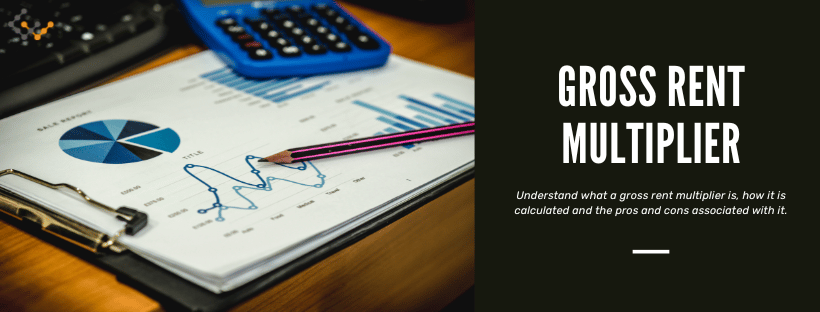
eXp Commercial is one of the fastest-growing national commercial real estate brokerage firms. The Chicago Multifamily Brokerage Division focuses on listing and selling multifamily properties throughout the Chicago Area and Suburbs.
Sunday, May 7, 2023
Saturday, May 6, 2023
Blackstone’s Suburban Chicago Apartments Selloff Swells To $247M

Blackstone is on a nearly $250 million selling spree throughout Chicago’s suburbs, having found two real estate investors who have centered their portfolios on the area to take on big multifamily properties.
Blackstone Real Estate Income Trust sold the 440-unit Green Trails Apartments in Lisle for $100.4 million and the 319-unit Grand Reserve in Naperville for $93.5 million, Crain’s reported. The deals come from BREIT selling the 236-unit Windbrooke Crossing complex in Buffalo Grove for $53.3 million.
New York-based DRA Advisors, which bought the Buffalo Grove property, also bought the Lisle property. DuPage County records show that San Francisco-based apartment investor Friedkin Property Group bought the Naperville complex.
While many multifamily investors have been flocking to the suburbs, BREIT has sold all but one of the properties it owns. Meanwhile, DRA and Friedkin are showing a strong taste for the Chicago area, where each firm has focused its respective acquisitions to make it the largest market for both.
Blackstone took over the recently sold properties and another in Lombard when it bought Resource REIT for $3.7 billion in May 2022. BREIT has listed the 256-unit Martin’s Point property in Lombard for sale but hasn’t found a buyer yet.
BREIT recently had to tighten redemption requests after a breach of its quarterly repurchase limit, though it received a massive $4 billion injection from the University of California system’s UC Investments. Rising interest rates have hindered the fund’s ability to make acquisitions.
BREIT chooses to focus on markets in the South and the West, hoping population booms and job growth will continue to boost real estate there.
Multifamily values have been rising in suburban Chicago, which netted BREIT more money for the properties than they had previously sold for. Resource originally paid $78 million for the Green Trails property in May 2017, signifying a 29 percent increase in value. Grand Reserve’s value rose by 40 percent as Resource bought it for $66.7 million in December 2015.
Source: Blackstone’s Suburban Chicago Apartments Selloff Swells To $247M
https://www.creconsult.net/market-trends/blackstones-suburban-chicago-apartments-selloff-swells-to-247m/Friday, May 5, 2023
Gross Rent Multiplier: What is it and How is it Calculated


Determining which rental property is worth your investment requires carefully looking at various bits of data. The gross rent multiplier in real estate happens to be one of the most important factors you may wish to focus on – and the good news is there are many such metrics you can use to get a good idea of the value of any property.
First Things First: What Is Gross Rent Multiplier?
The gross rent multiplier is a specific formula that helps evaluate a property as an investment. Still, it can also be used to help manage the real-time performance of your existing property. So, what is it?
This is an easy calculation to determine how profitable similar properties are based on the gross annual rental income that those properties will likely generate. It is a helpful tool to use when market rents are changing quickly, which is what has occurred in recent years.
How Do You Use a Gross Rent Multiplier?
Real estate investors can use the gross rent multiplier to compare the rental income potential of one property to another. It is a simplified method of analyzing properties without putting the time and money into a full analysis, which is why it is just a first step in the decision-making process. It is quick and easy to use.
Answer a few questions and get custom mortgage quotes. We'll match you with offers from our network of 650+ lenders.
How to Calculate Gross Rent Multiplier
To calculate this figure, you need to take the market value of the rental property and then divide it by the gross rental income of that property. You can apply it in several ways, such as using the list price or the sale price. You can also use the property’s appraised value. In addition, you can choose the income range that you would like, either monthly or the property’s annual income.
No matter which metrics you use, be sure you are using the same metrics from one property to the next. That way, you get a clear understanding of the value of the properties in how they compare to each other. Without keeping these factors even, you are not producing data that is accurate.
Formula for Calculating Gross Rent Multiplier
The gross rent multiplier formula is:
Gross Rent Multiplier = Rental Property Value / Gross Property Income
What Is an Example of Gross Rent Multiplier?
You can find a gross rent multiplier calculator to help you do the math. However, you may be able to do this on your own (unlike other metrics requiring a significant amount of evaluation and comparison). Here’s an example of how it works.
Consider a property that’s listed for sale at $1 million. It has a gross annual income of $160,000. To determine the GRM, divide 1,000,000 by 160,000. That gives you a GRM of 6.25.
You can continue to use this GRM formula across other properties. Remember, this figure helps you to compare multiple properties to see which one offers the better outcome.
Most of the time, you want properties that produce the most income. The lower the GRM is, the better. The figure here, 6.25, is not necessarily good or bad. Rather, it is just one metric that can be used to compare several other properties.
The lower the GRM is compared to other properties similar to the first one, the better. That means that the property is generating a higher income level, and ultimately, it will provide you with insight into how long it will take to pay for itself.
Advantages and Downsides of Using Gross Rent Multiplier
Should you use GRM? Generally speaking, there is no reason not to use this metric as a first step in comparing two properties. Here are a few things to keep in mind.
Advantages of Gross Rent Multiplier
There are some advantages to using gross rent multiplier:
- Using the average gross rent multiplier to compare several properties is a quick and easy way to see the potential profit difference between two properties.
- The data needed for GRM is typically readily available to investors, unlike other metrics that require estimation or research.
- It can also help monitor changes in property value based on the changes in gross rents. You can monitor this factor over time.
- It is an ideal screening tool that allows you to determine if you should go deeper.
- It focuses on the income the property will generate rather than the price of the property.
Downsides of Gross Rent Multiplier
There are some downsides to using GRM:
- It does not consider operating expenses, which could play a significant role in the overall profitability of any property. A property with high operating expenses may not be as profitable.
- This metric does not consider vacancies or other lost rental income instances or if the property is poorly maintained, which can also impact profits.
- It does not measure the time it takes to pay off a property but rather compares just the gross rental income generated on the property’s value.
Gross Rent Multiplier vs Gross Income Multiplier
Another commonly used metric is the gross income multiplier. This would consider any additional income sources for the property, not just the rental income for it. Though these metrics are often confused, they are rather different, and both are valuable tools.
Some properties have additional sources of income that should be considered when comparing investment opportunities, such as funds from laundry services, billboards, or parking. These add to the property’s value to the owner, and with this formula, it is possible to include them in the comparison.
Gross Income Multiplier vs Cap Rate
Cap rate is one of the other metrics many investors use to help them decide where to invest. GRM is an estimate that helps you compare rental property value based on the income that property generates. Cap rate determines what the property value currently is or should be based on the net operating income returned to an investor.
Net operating income only focuses on normal operating expenses. It does not factor in mortgage payments made on the property, and it excludes debt service from the calculation. With cap rate, the higher the figure is, the more profitable the property could be.
Source: Gross Rent Multiplier: What is it and How is it Calculated
https://www.creconsult.net/market-trends/gross-rent-multiplier-what-is-it-and-how-is-it-calculated/1120 E Ogden
1120 E Ogden Ave, Suite 101 | Naperville, IL 60563
Broker: Randolph Taylor rtaylor@creconsult.net | 630.474.6441
https://www.creconsult.net/retail-office-for-lease-1120-e-ogden-ave-suite-101-naperville-il-60563/?wpo_all_pages_cache_purged=1

9301 Golf
9301 West Golf Rd | Des Plaines, IL 60016
Broker: Randolph Taylor rtaylor@creconsult.net | 630.474.6441
https://www.creconsult.net/golf-sumac-professional-building-medical-office-space-for-lease-9301-golf-rd-des-plaines-il-60016/

Thursday, May 4, 2023
Commercial Real Estate Cost Segregation 2022 Tax Deadlines

Cost segregation is the method of re-classifying components of your commercial building from real property to personal property. This process allows the assets to be depreciated on a 5-, 7-, or 15-year schedule instead of the traditional 27.5- or 39-year depreciation schedule of real property. Thus, your current taxable income will be greatly reduced, and your cash flow could increase by 5% – 8% of your building’s cost.
Please see below eXp Commercials' Cost Segregation national partner's internal deadlines for the upcoming tax season for those who file timely:
March Tax Deadline (3/15/2023)
Internal Deadline is 1/20/2023 - All relevant data to complete the project must be received by this date in order to ensure timely delivery of the study for the March tax deadline. Relevant data needed includes the site survey, building cost basis/depreciation schedule, blueprints (if available), appraisal (if available), and construction/improvement cost detail (if applicable).
April Tax Deadline (4/18/2023)
Internal Deadline is 2/20/2023 - All relevant data to complete the project must be received by by this date in order to ensure timely delivery of the study for the April tax deadline. Relevant data needed includes the site survey, building cost basis/depreciation schedule, blueprints (if available), appraisal (if available), and construction/improvement cost detail (if applicable).
Please Contact Us to order your Cost Segregation Study.
https://www.creconsult.net/market-trends/commercial-real-estate-cost-segregation-2022-tax-deadlines/
Selling an Apartment Building FAQ's
 [ux_text text_align="left"]
[ux_text text_align="left"]
Top Frequently Asked Questions on Selling a Multi-family in Chicago
Are you thinking of selling your multi-family property?
Here are some of the most frequently asked questions we get from clients looking to sell multifamily properties in Chicago.
Before You Sell:
How is selling a multi-family different than selling a single-family home?
If you’ve sold an investment property before, you’ll be familiar with the ins and outs of selling a multi-family. However, if it’s your first time, you’ll learn that the process works differently than it would with a single-family or condo.
A large part of a multi-family’s sale appeal will lie in its cash flow. Buyers looking for a multi-family are looking for more than just a home: they will want to see a property that generates good rental income, rents easily, and provides a financial incentive for them to buy. This could be in the form of easy upgrades they can make to boost rental income or as an empty unit for them to occupy and offset their own living expenses.
Do I need a broker to sell a multi-family?
Of course, we’re biased...but we do recommend working with a broker who is experienced in the multi-family market in your neighborhood. Not only will they be able to pull good comps and provide a market analysis of how you should price the property, but an experienced agent will know how to show the proeprty to different types of buyers, whether they are experienced investors or first-time multi-family buyers who want some supplemental income. Brokers who work in multi-family markets are also in the know about rent prices and trends, which will help them sell your home at the right price.
Do I need to make repairs before selling?
Some buyers look for multi-families with units that could benefit from some updating because they see it as an opportunity to raise the rent using some sweat equity. Your agent should be knowledgeable of the renter’s and buyer’s market for your area and property type and will have good recommendations of what types of updates to make before selling.
Making simple upgrades around the property and in common areas like hallways and entryways can be an easy way to boost the property’s curb appeal that won’t break the bank, whether it’s through new fixtures or a fresh coat of paint.
How do I list a multi-family?
One of the most important parts of getting ready to list your property is confirming the number of legal units in the building. In a city full of old homes like Chicago, many apartment units have been created in old basement spaces or have been de-converted into larger single unit. If you sell your property with an incorrect number of legally recognized units, you could face legal issues down the road. To get the most accurate picture of how your property should be valued and listed, get in touch with the local village to confirm the number of legal units listed in their records.
How should I price my multi-family?
Buyers and their lenders will typically appraise a multi-family home using the income approach method instead of simply using comps in the area to compare values. This means that the appraiser will look at the cost of property maintenance and rental income to evaluate a property’s cash flow. To price your multi-family, you should do appraise a building’s income and use comps in the area to accurately represent what someone might want to pay for it.
How should I market my multi-family?
- You’ll want professional photos of each unit to get ready to list your property, which means asking your tenants to clean their spaces and set up a time for the photographer. Having an empty unit comes in handy because it gives you the opportunity to deep clean the space and potentially even stage it with furniture to show off its potential.
- Put together a financial breakdown and lease abstract to show possible buyers. This might include details like current rents, cost of utilities, and other maintenance fees to give them a better idea of potential rental income.
Selling a building with tenants.
How do I sell my multi-family with occupied units?
One of the trickiest parts of selling a multi-family is to make sure that you are aware of your tenants’ legal rights and that you make the selling process as effortless for them as possible.
- Breaking the news to tenants: Announcing that you’re listing your property for sale isn’t the easiest conversation to have with tenants. For them, it means the hassle of cleaning their apartments for multiple showings, a change in landlords, and a potential increase in their rent after the sale. However, you are legally obligated to inform your tenants when you sell the property, so it’s important to have that conversation before getting too far into the selling process.
- Tenant’s rights when a property is listed for sale: To protect yourself from liability and provide a smooth transition for your tenants during the sale process, it’s important to be aware of their rights determined both by the state and by their lease agreement. Your tenants most likely have a right to be notified a set amount of time before showings and have a lease that can’t be terminated just because you want a vacant unit to sell the property. Reread your lease agreements and the tenant’s rights for your city before listing your home or schedule showings.
How do I show a property with occupied units?
An experienced Broker will know the ins and outs of how to show a property with occupied units (which is one of the biggest reasons why you should take your time to find a good agent). The most important concern when it comes to showing units is to make sure that the tenant is aware of the appointment sufficiently ahead of time. Check your lease agreement to see if there are already guidelines in place, or contact your tenant prior to listing the process to come to an agreed-upon amount of days or hours before the showing when they should be contacted.
Have you thought of selling your property and would like to know what it's worth? Request a valuation for your property below:
Source: Selling an Apartment Building FAQ’s
[/ux_text] https://www.creconsult.net/market-trends/selling-an-apartment-building-faqs/🏙️ eXp Commercial Facilitates $1.475M Multifamily Redevelopment in Wheaton, Illinois Proud to share our latest Chicagoland multifamily rede...
-
Just Listed: Golf Sumac Medical Offices | Des Plaines IL Price: $3,900,000 SF: 35,245 Stories: 3 Occupancy: 82.3% Cap Rate: 9.63% * Stabiliz...
-
REGISTER TODAY The Commercial Real Estate Symposium will provide junior and senior agents and brokers with valuable insights ...
-
New Listing! 21 Unit Multifamily Property 8.5% Cap Rate 1231 N Galena Ave | Dixon, IL 61021 Mostly Renovated Units, 95% Occupancy $995K, 8.5...